STIRRINGS
MFA Thesis Show 2024
Fosdick-Nelson Gallery
Alfred, NY
I understand clay and ceramic as both flesh and technology; this dichotomy within the material is the foundational soil of my inquiry. Clay, a substance– like other aspects of a human construction– is made of the collected bodies of beings. Yanked out of the ground, pulverized, sieved, compressed… – ouch. It is because we learn of these materials as dead and monolithic, that I seek to uncover their systematically obscured, subterranean identities.
The questions being, ‘what is the relationship between what is built by us and what grows independent of us?’ ‘What is the impact of distorting an organismal lifeworld into a machine?’
. . .
Stirrings showcases a body of forms that engage the viewer in a series of encounters, soliciting a range of emotive and inquisitive responses. Curiously familiar, yet defiantly unrecognizable; their allusory impact invokes a range of potential identities– whilst simultaneously refusing to be categorized.
The forms I render source from my repository of attachments built over the course of a lifetime, offering a range of associations through their unique anatomies. While being articulate and bold in their expression, the forms maintain unwaveringly ambiguous identity. The grate is a central condition of the forms. Alluding to a system that exists beyond comprehension, these structures serve as powerful thresholds to the unseen. Confronting us with the unknown and the indeterminate, the forms featured in Stirrings function to re-align potentials for encounter as a site where fear may morph with curiosity and intrigue.
Evoking a range of correlated fears, the storm drain offers a visceral encounter with the beckoning power of the unknown. Utilizing the imaginative space afforded by the unseen realm beyond these machined thresholds, storm drains offer an opportunity to explore possibilities of life, intelligence and realities beyond the limitations of our sensescapes and realities. Mediators for the subterranean-- the bowels of our infrastructure, I explore this phenomenon with clay– a material that supports our vital, haptic connection to the wider, deeper ground.
Clay, a momentary incarnation within a cycle of animal, plant, and mineral, serves as our subterranean mediator, and is evidence of the dynamic interchangeability between all forms of life over the course of deep time.
Rooted in reverence for that which exists beyond comprehension– within our bodies, the lifeworlds of the dirt, to the ocean’s depths, below the shadowy cavern below the storm drain, to the innards of the machine– Stirrings imaginatively animates the co-mingling of the seemingly disparate, unseen realms of life and intelligence.
. . .
In the final months of my thesis work, I explored ways of altering pedestals as a way to expand on the other-worldliness of this body of work, question the perceived neutrality of the gallery space, and interfere with its standardization and artifice.
The display augments perception of the scale these forms purport. Working to generate micro-environments, the rock surface can report as landscape– making the forms appear monumental in relation to the ground they stand on. The plinths offer a small site which allude to the coinciding of the industrial and the natural. Three diatomic friends glide down a segment of pipeline, and another appears to hover over a ridged duct. In addition to offering these associations with context, plinths build on the illusions and physicality of the work, utilizing void and shadow to confuse perception of depth, scale and space.
link to my full thesis document via the Alfred University Research Archives:
MFA Thesis Show 2024
Fosdick-Nelson Gallery
Alfred, NY
I understand clay and ceramic as both flesh and technology; this dichotomy within the material is the foundational soil of my inquiry. Clay, a substance– like other aspects of a human construction– is made of the collected bodies of beings. Yanked out of the ground, pulverized, sieved, compressed… – ouch. It is because we learn of these materials as dead and monolithic, that I seek to uncover their systematically obscured, subterranean identities.
The questions being, ‘what is the relationship between what is built by us and what grows independent of us?’ ‘What is the impact of distorting an organismal lifeworld into a machine?’
. . .
Stirrings showcases a body of forms that engage the viewer in a series of encounters, soliciting a range of emotive and inquisitive responses. Curiously familiar, yet defiantly unrecognizable; their allusory impact invokes a range of potential identities– whilst simultaneously refusing to be categorized.
The forms I render source from my repository of attachments built over the course of a lifetime, offering a range of associations through their unique anatomies. While being articulate and bold in their expression, the forms maintain unwaveringly ambiguous identity. The grate is a central condition of the forms. Alluding to a system that exists beyond comprehension, these structures serve as powerful thresholds to the unseen. Confronting us with the unknown and the indeterminate, the forms featured in Stirrings function to re-align potentials for encounter as a site where fear may morph with curiosity and intrigue.
Evoking a range of correlated fears, the storm drain offers a visceral encounter with the beckoning power of the unknown. Utilizing the imaginative space afforded by the unseen realm beyond these machined thresholds, storm drains offer an opportunity to explore possibilities of life, intelligence and realities beyond the limitations of our sensescapes and realities. Mediators for the subterranean-- the bowels of our infrastructure, I explore this phenomenon with clay– a material that supports our vital, haptic connection to the wider, deeper ground.
Clay, a momentary incarnation within a cycle of animal, plant, and mineral, serves as our subterranean mediator, and is evidence of the dynamic interchangeability between all forms of life over the course of deep time.
Rooted in reverence for that which exists beyond comprehension– within our bodies, the lifeworlds of the dirt, to the ocean’s depths, below the shadowy cavern below the storm drain, to the innards of the machine– Stirrings imaginatively animates the co-mingling of the seemingly disparate, unseen realms of life and intelligence.
. . .
In the final months of my thesis work, I explored ways of altering pedestals as a way to expand on the other-worldliness of this body of work, question the perceived neutrality of the gallery space, and interfere with its standardization and artifice.
The display augments perception of the scale these forms purport. Working to generate micro-environments, the rock surface can report as landscape– making the forms appear monumental in relation to the ground they stand on. The plinths offer a small site which allude to the coinciding of the industrial and the natural. Three diatomic friends glide down a segment of pipeline, and another appears to hover over a ridged duct. In addition to offering these associations with context, plinths build on the illusions and physicality of the work, utilizing void and shadow to confuse perception of depth, scale and space.
link to my full thesis document via the Alfred University Research Archives:
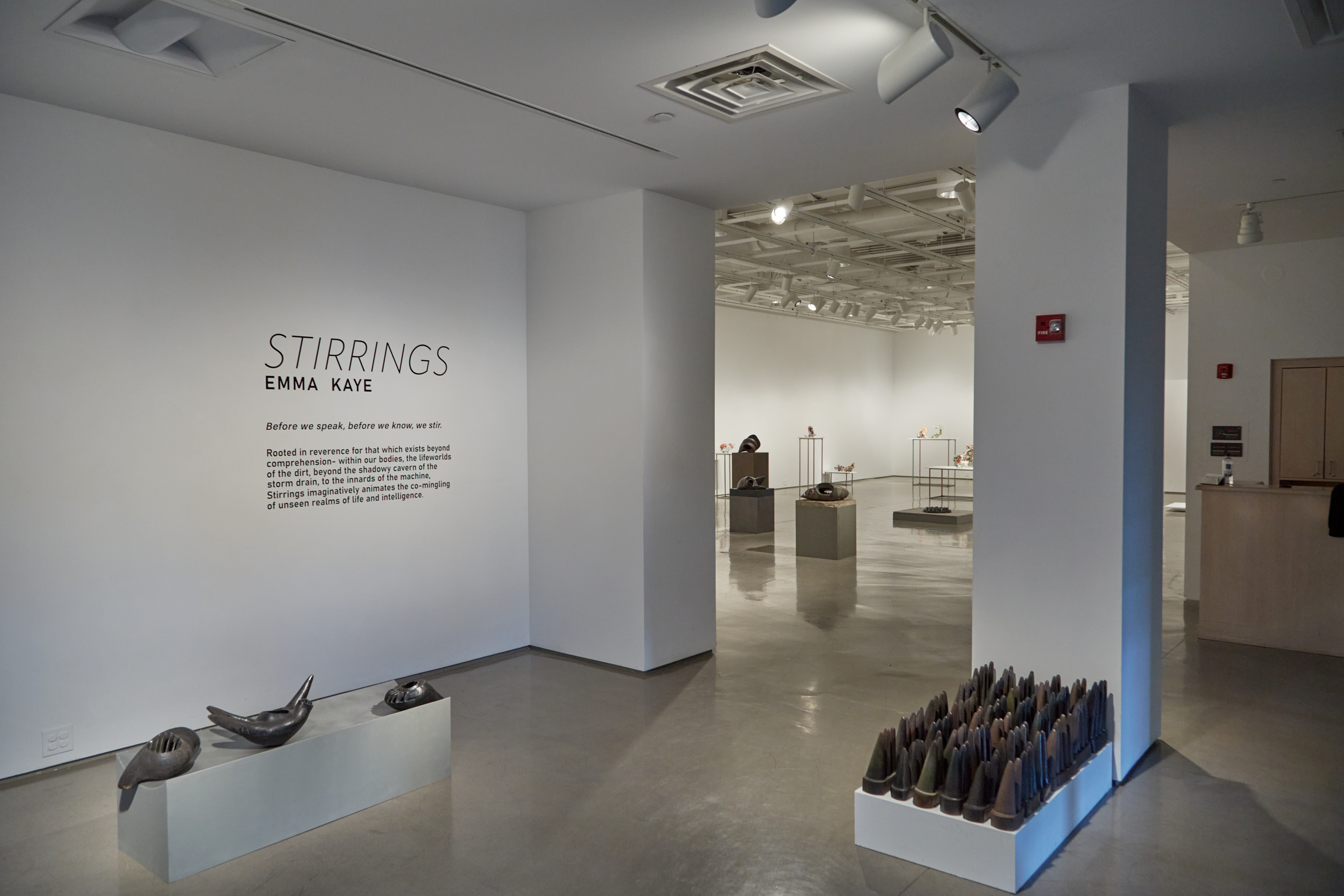
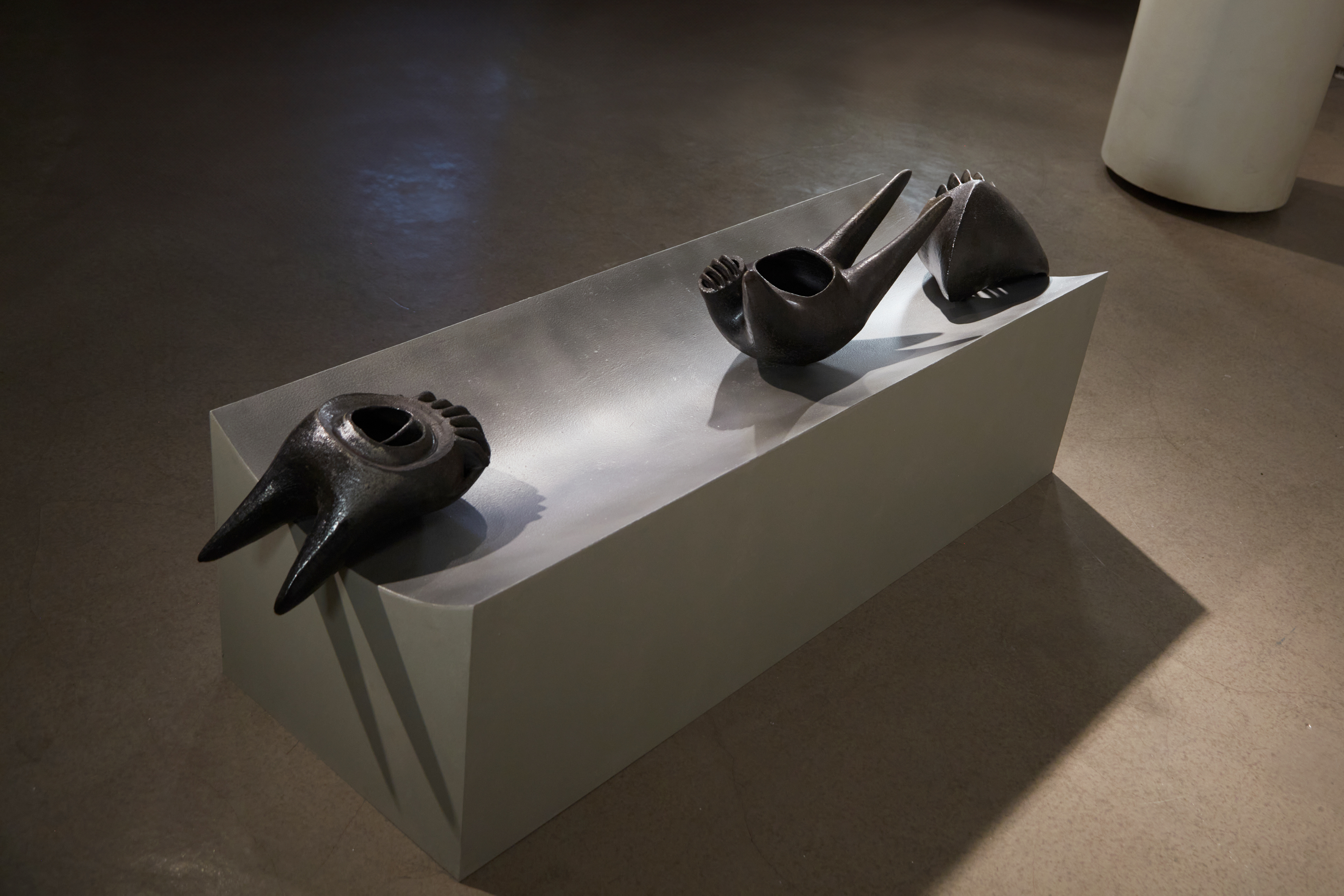
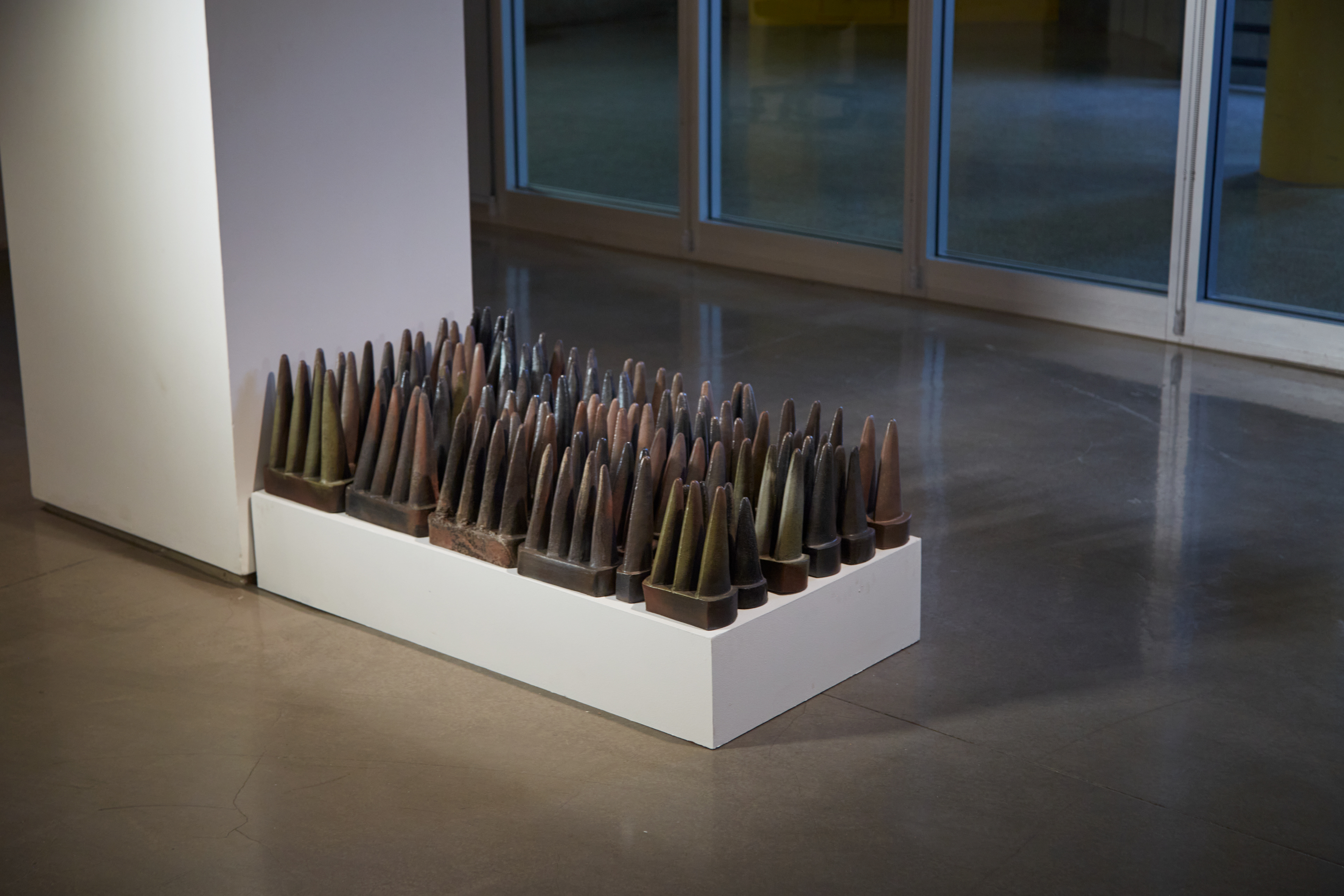
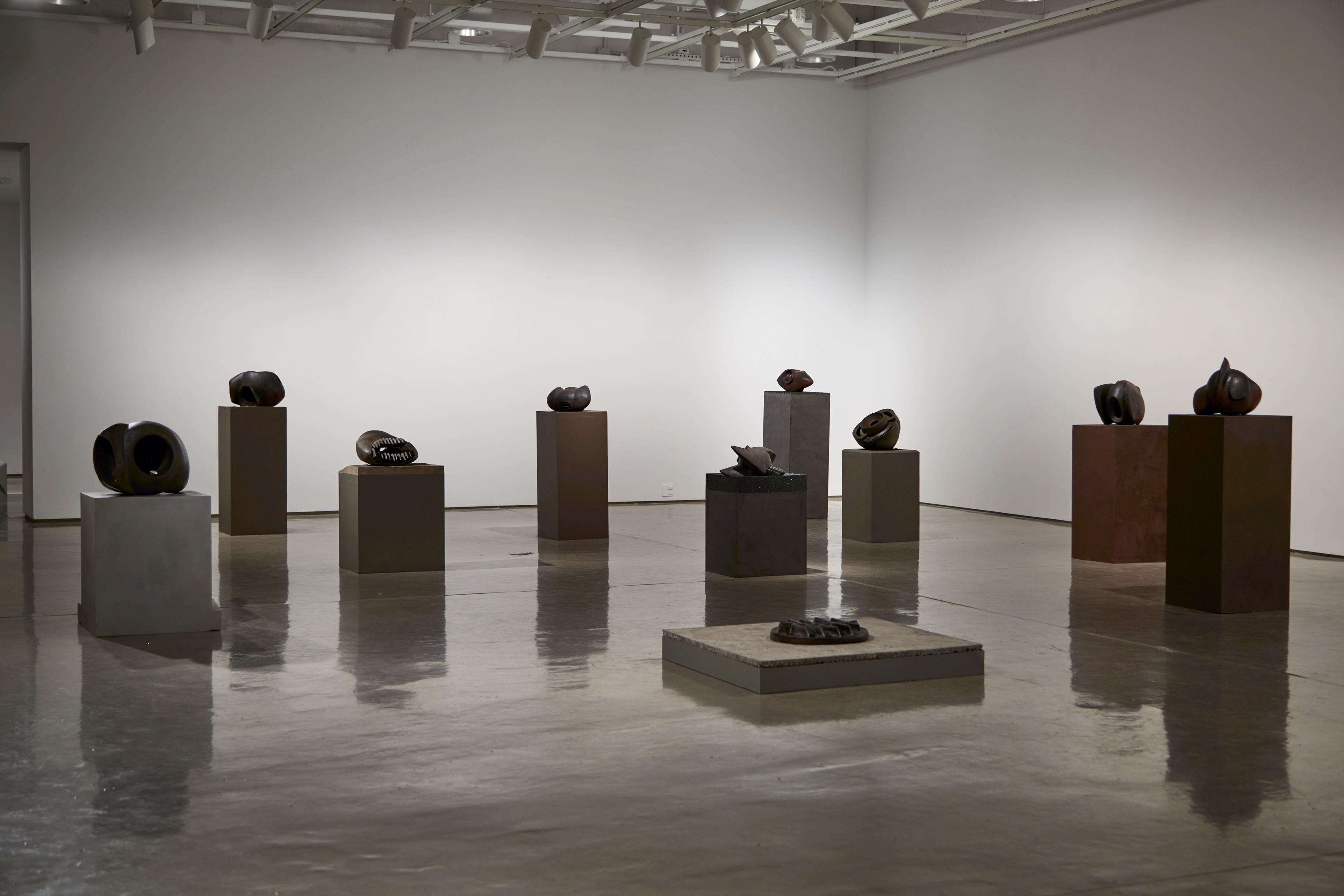
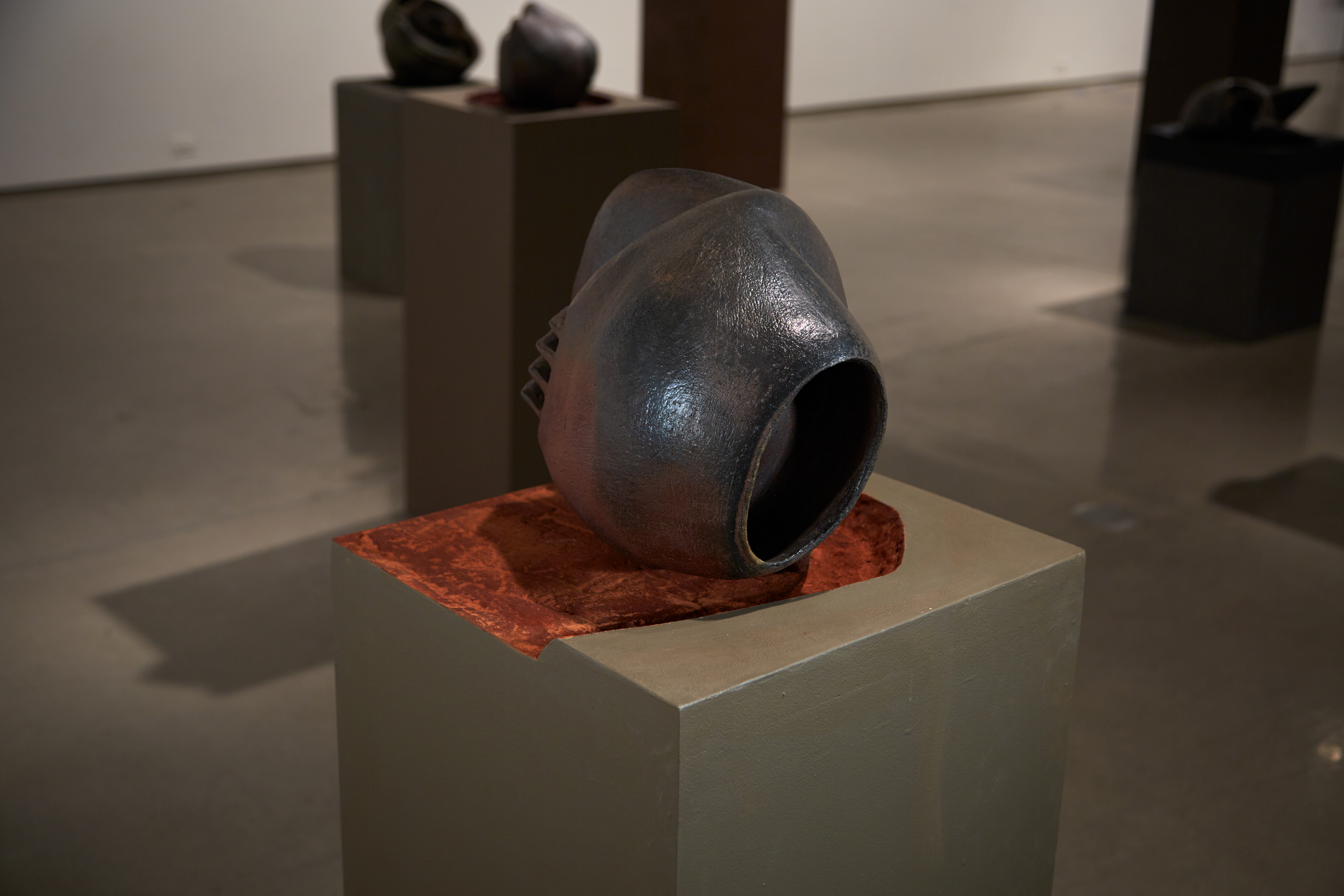
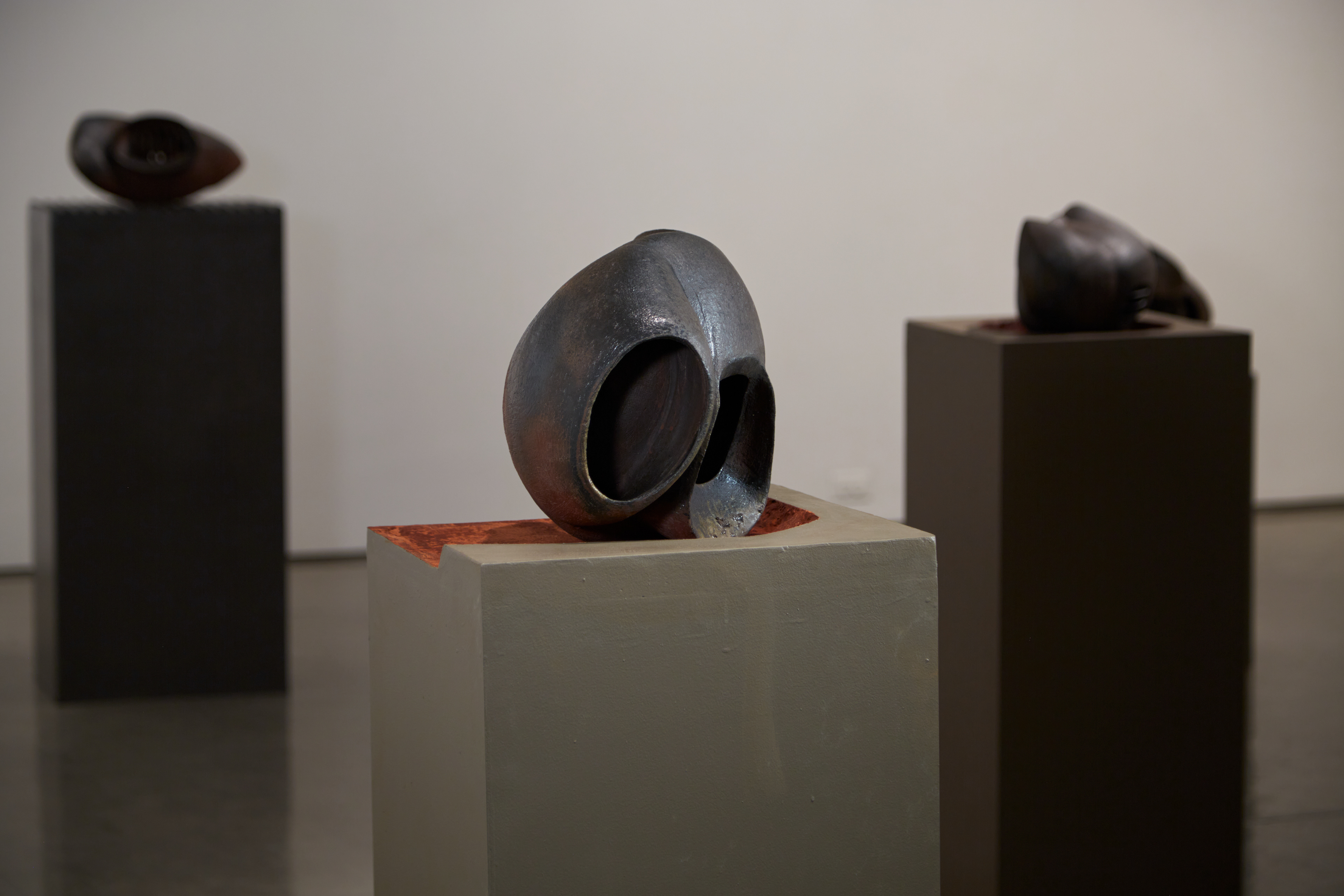
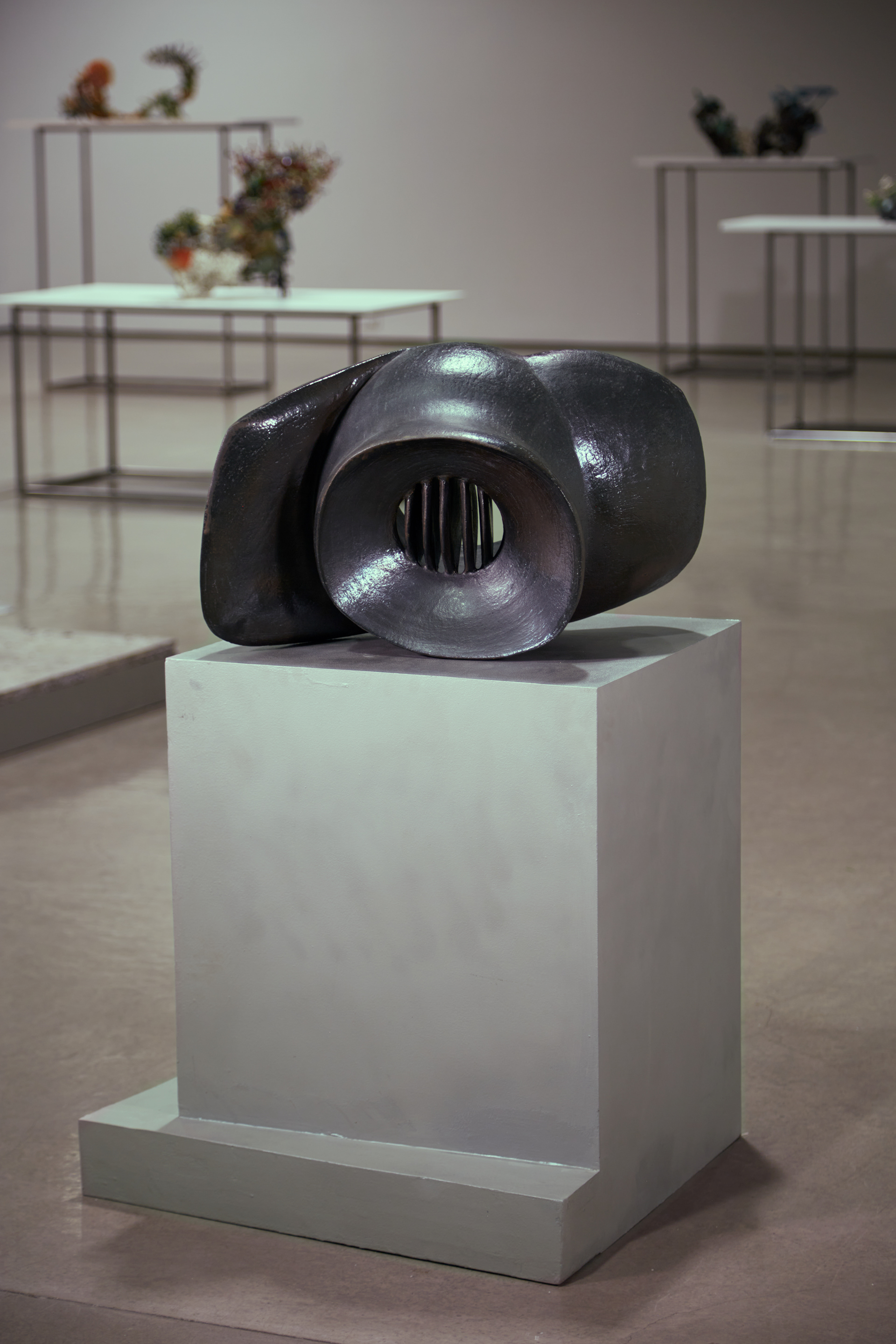
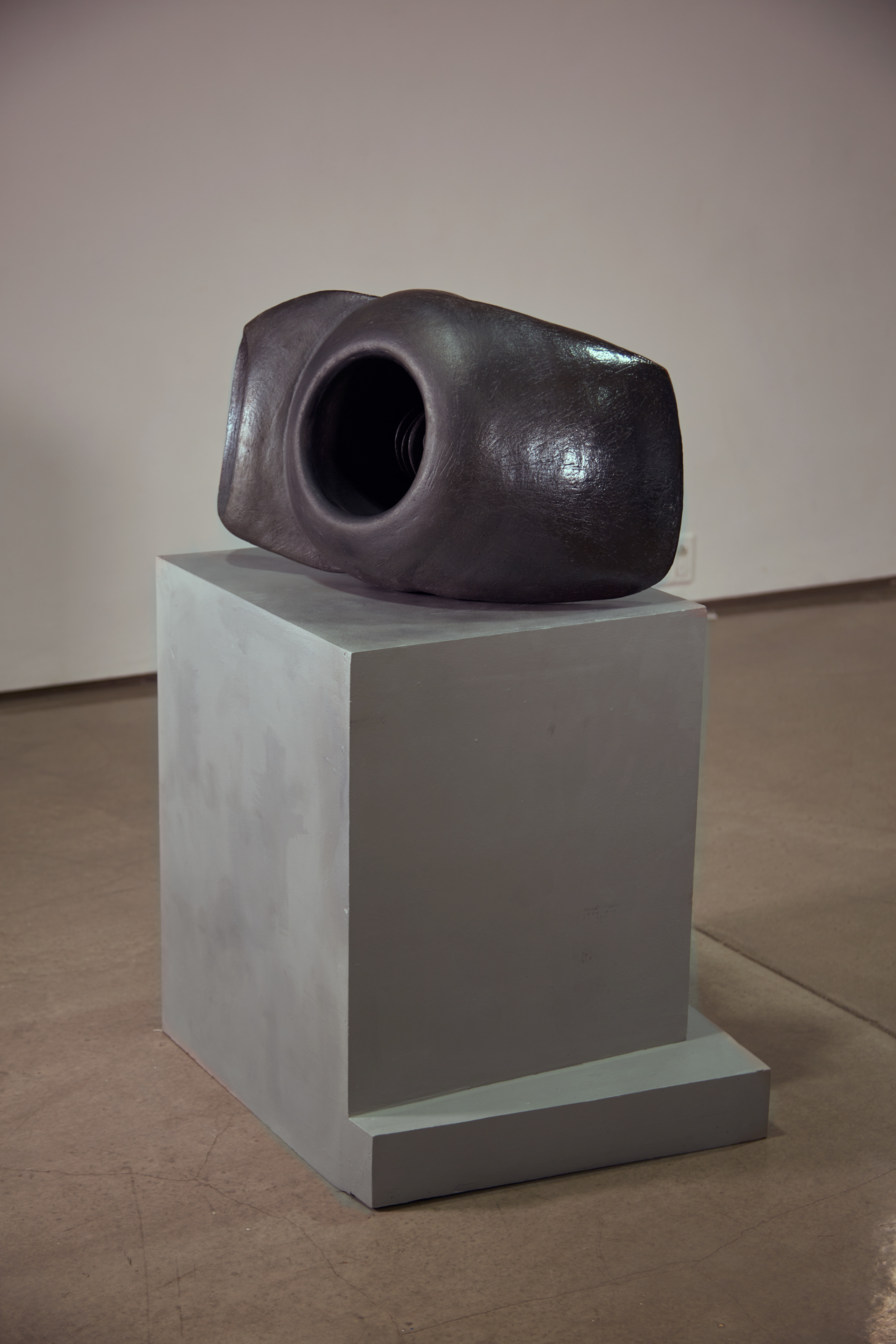
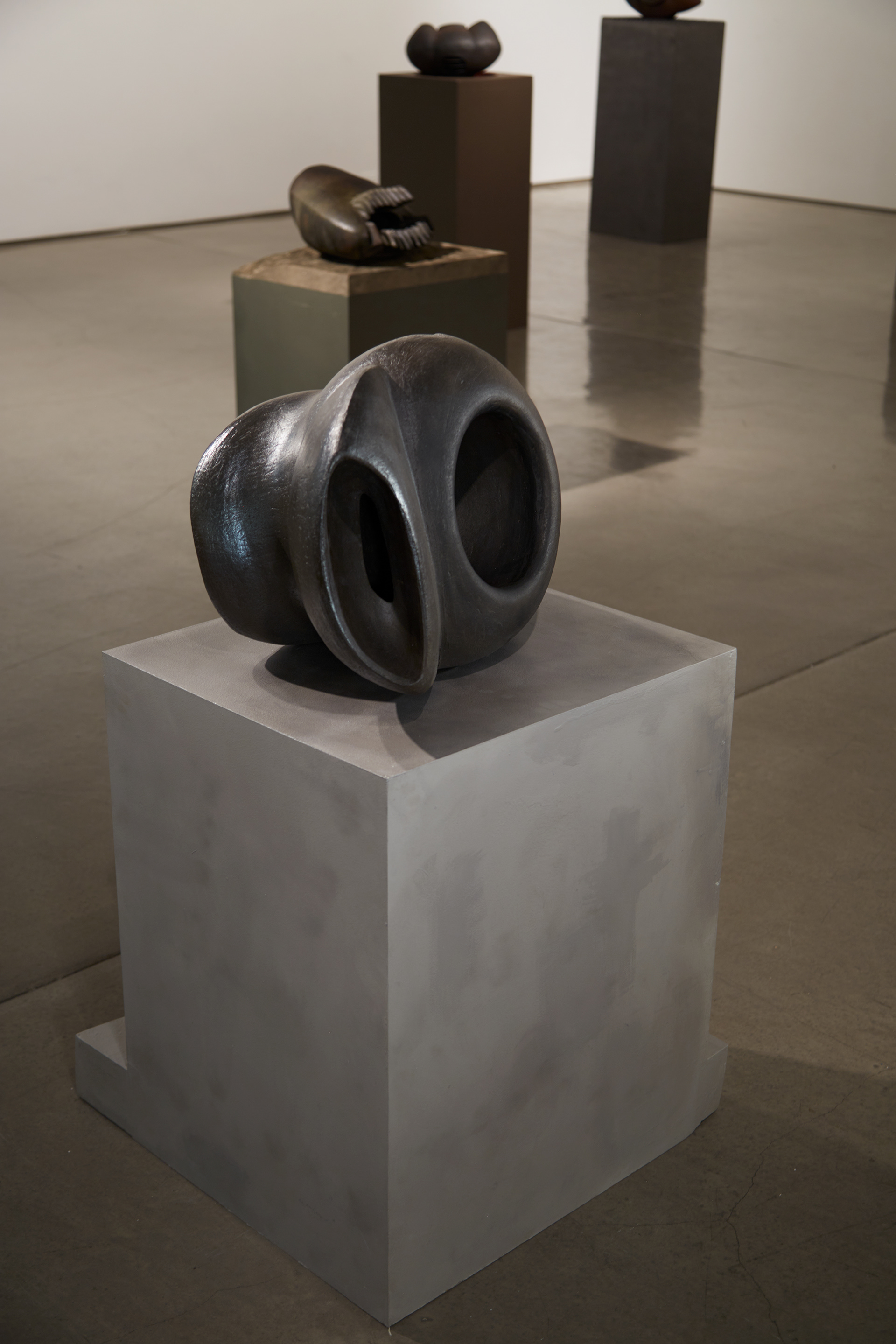


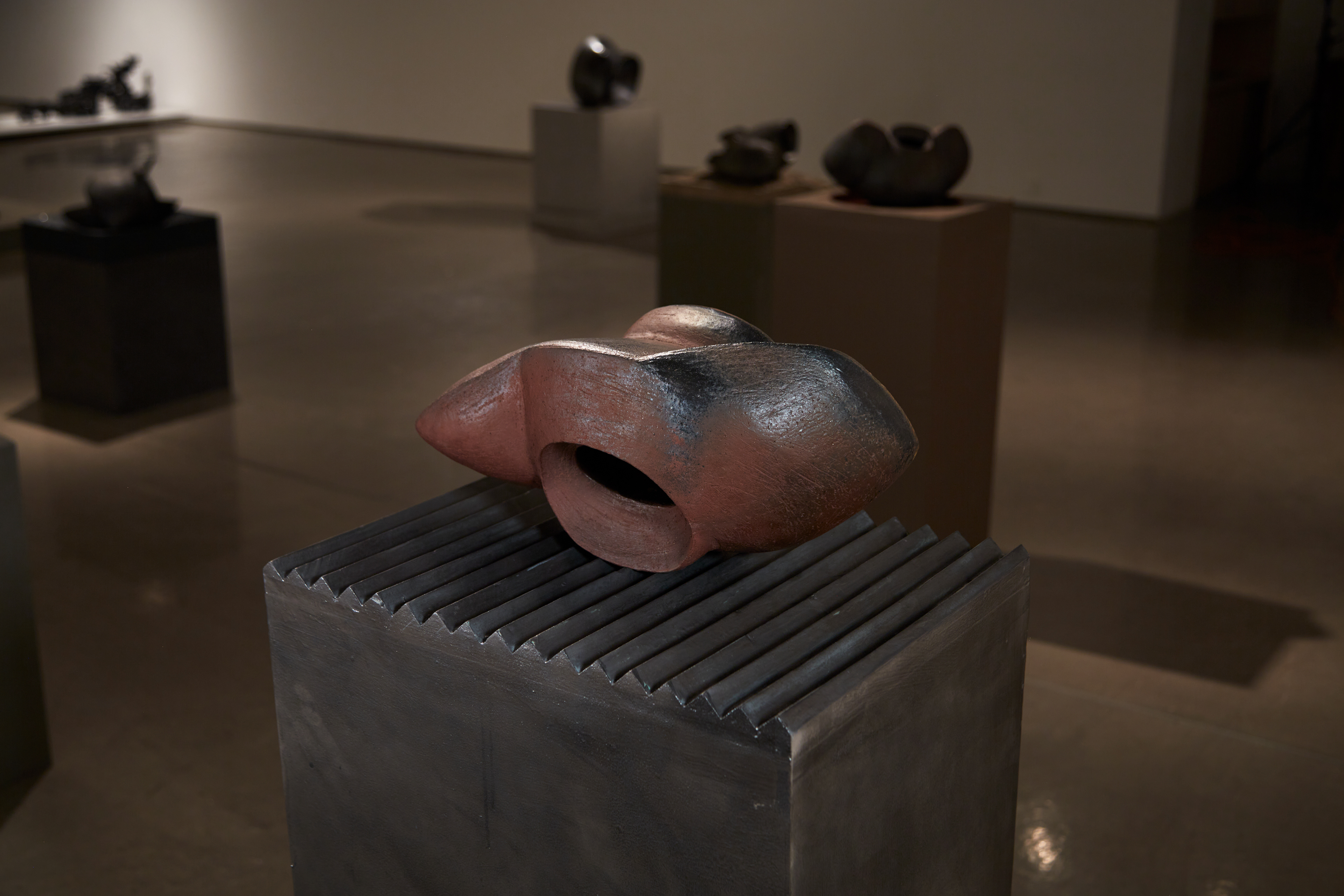
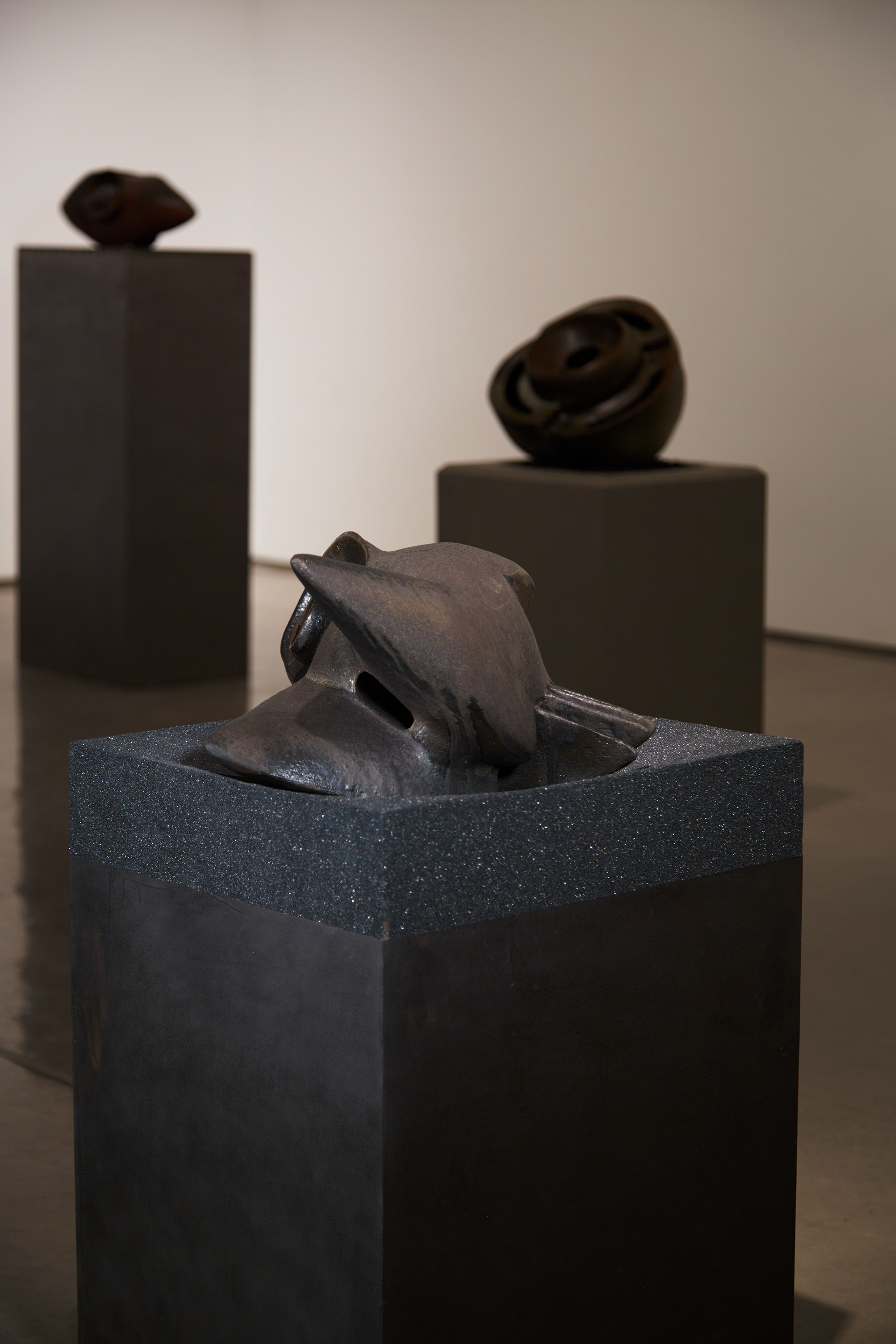
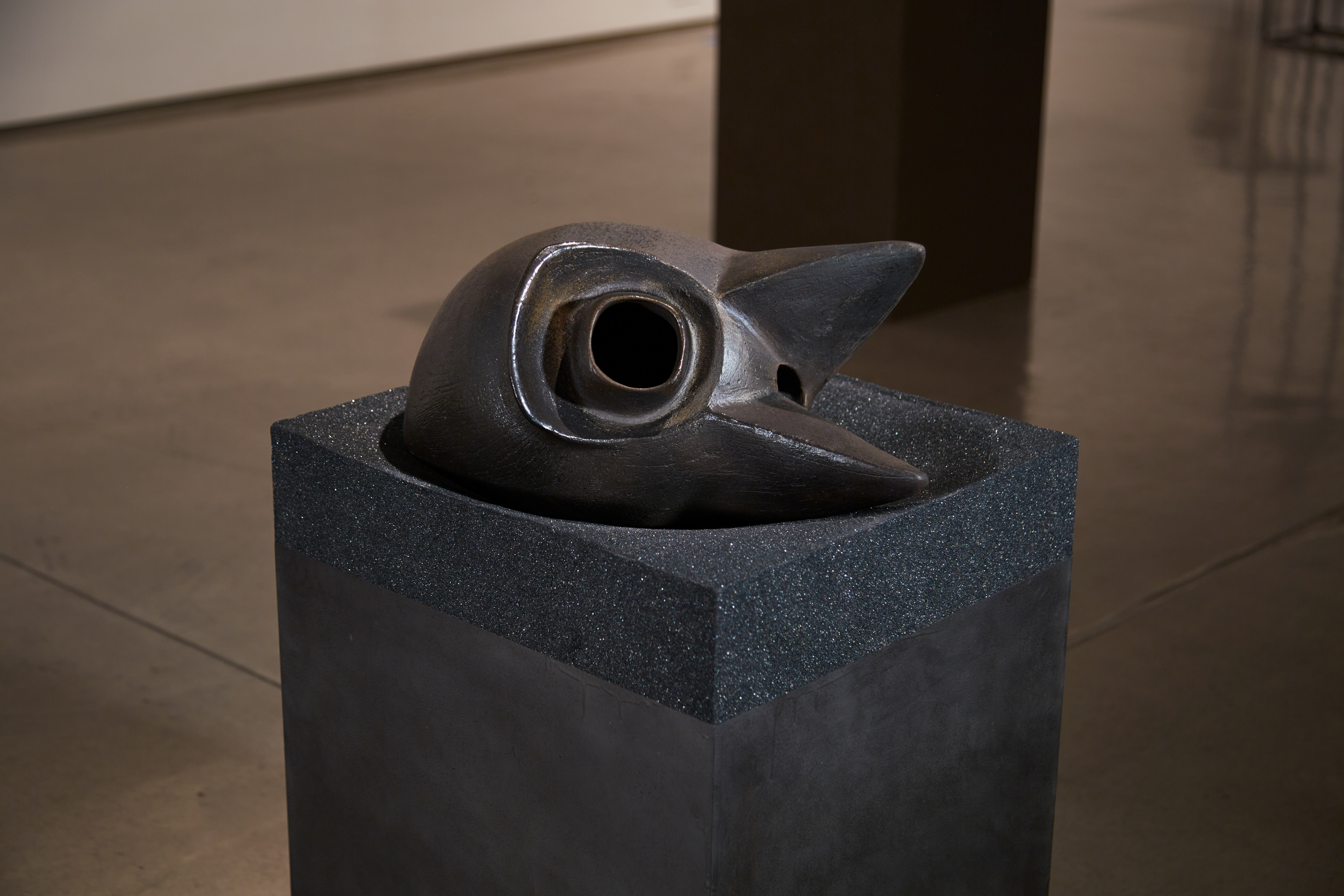
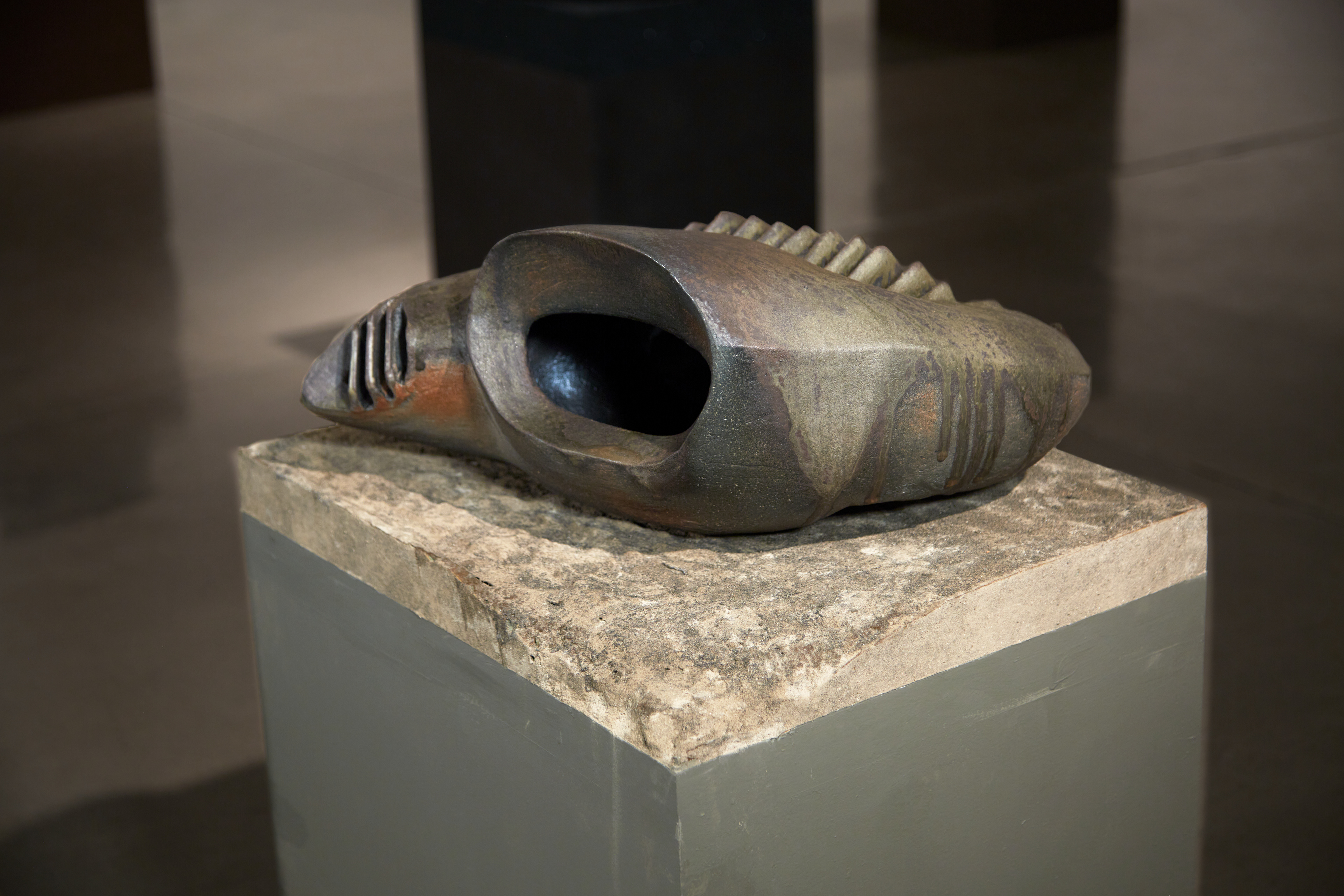
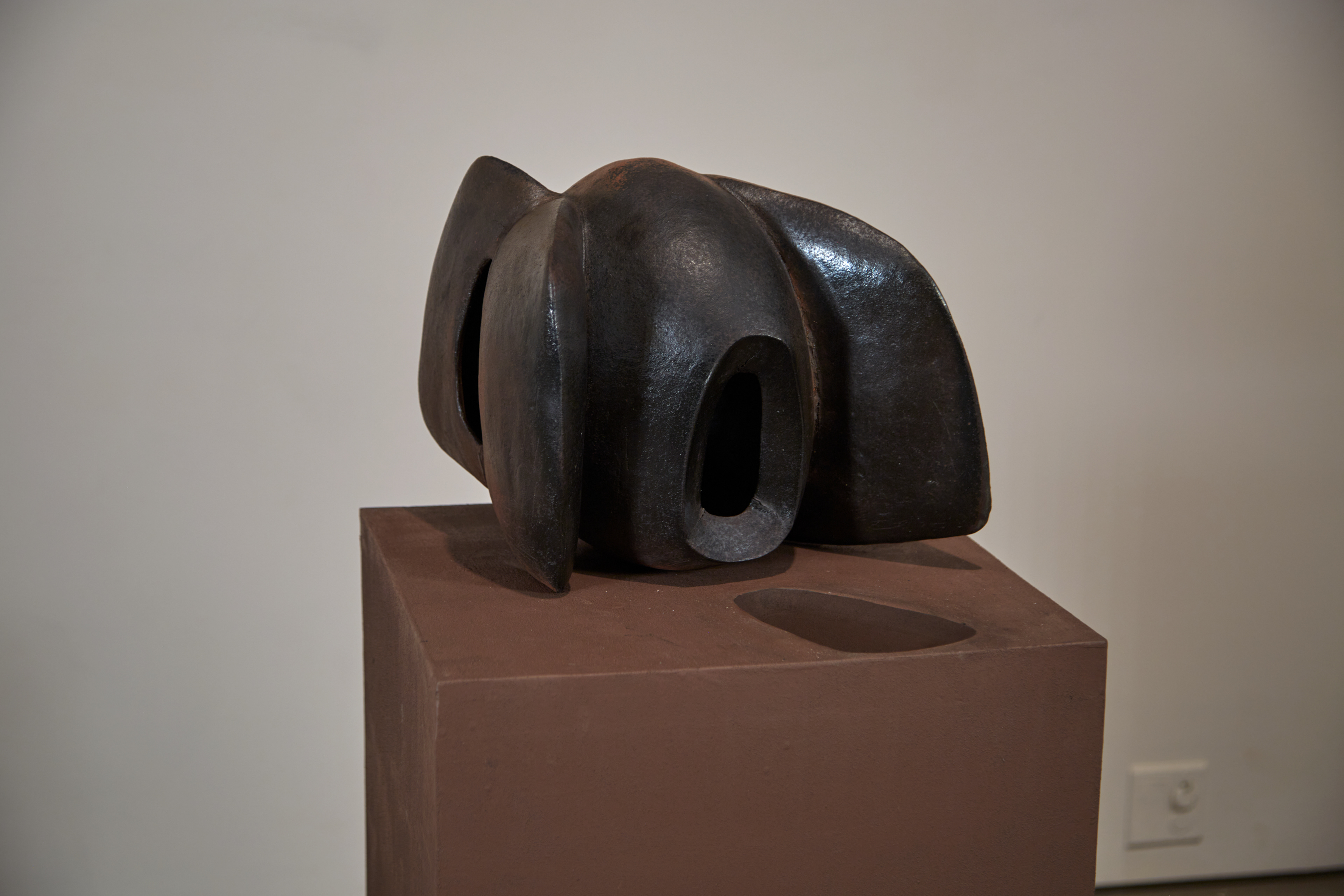

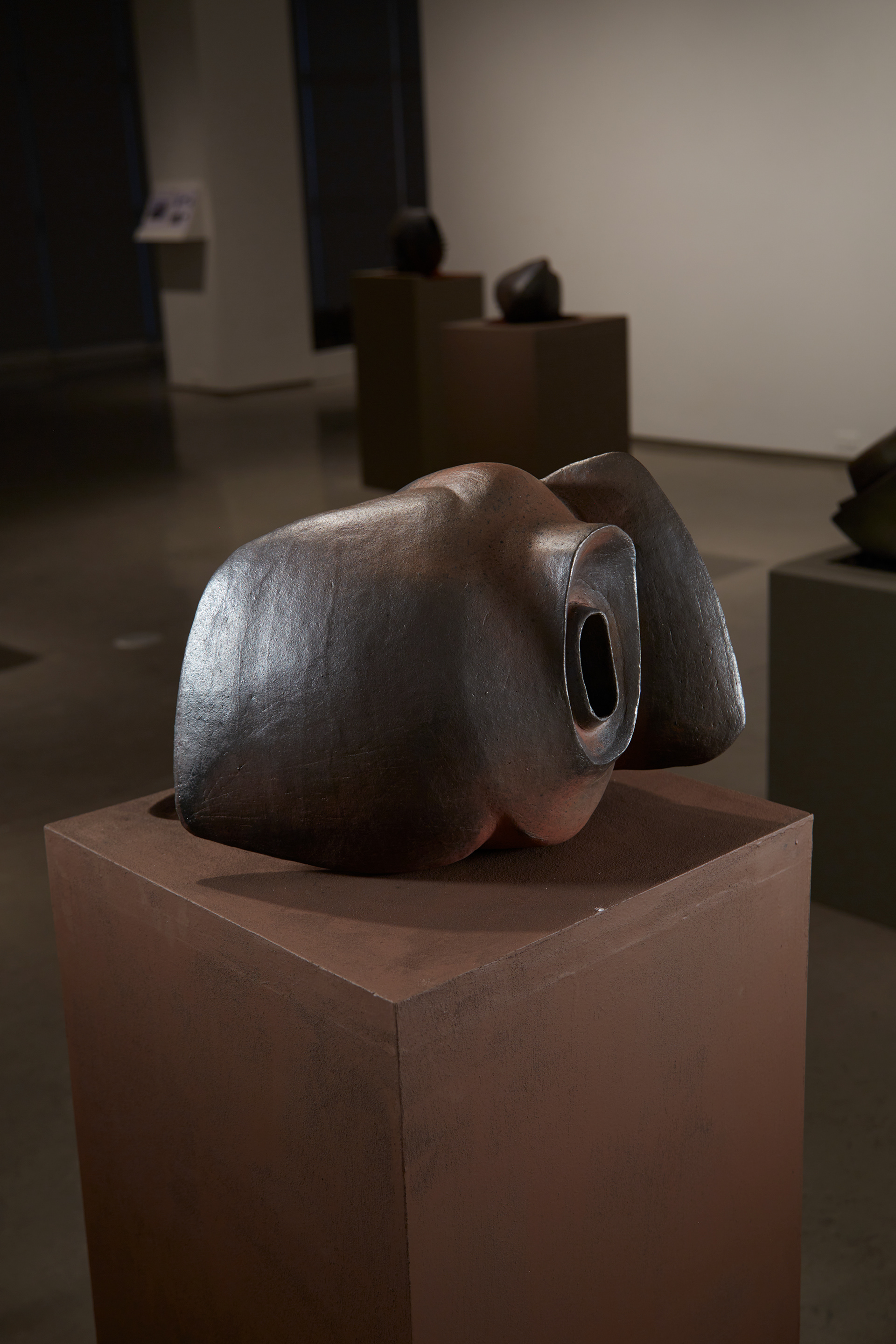
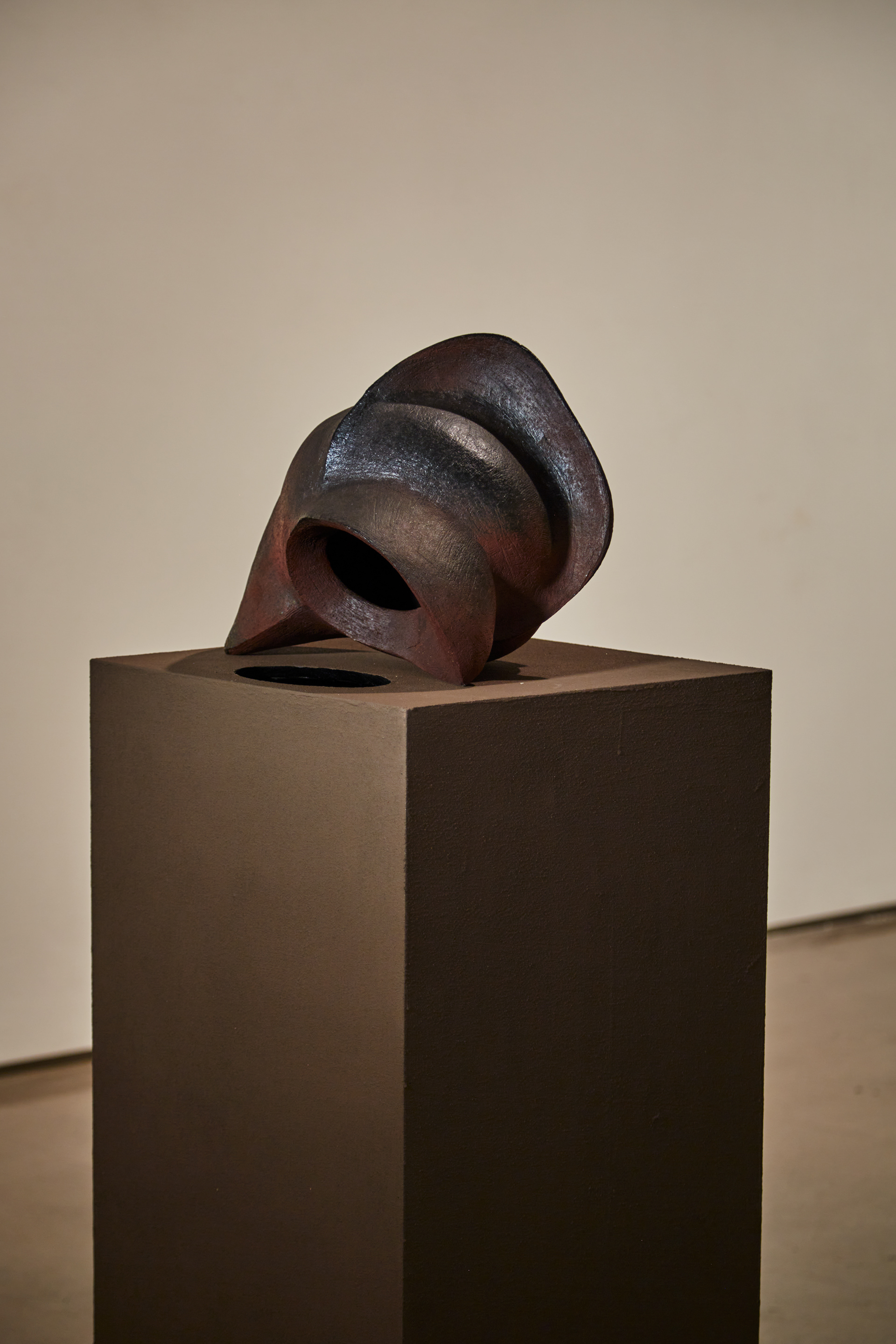
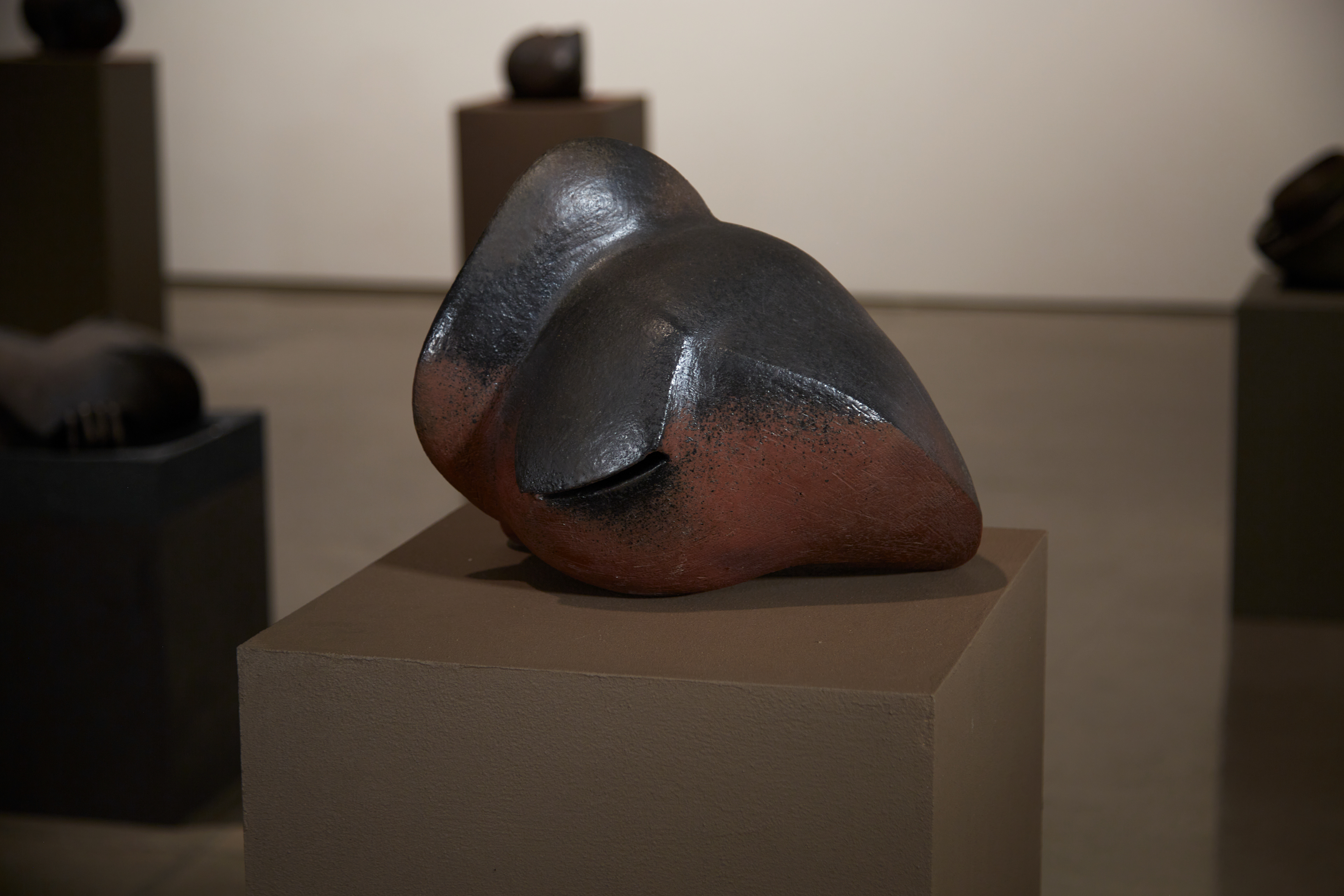

Photographs by Aidan Kaye